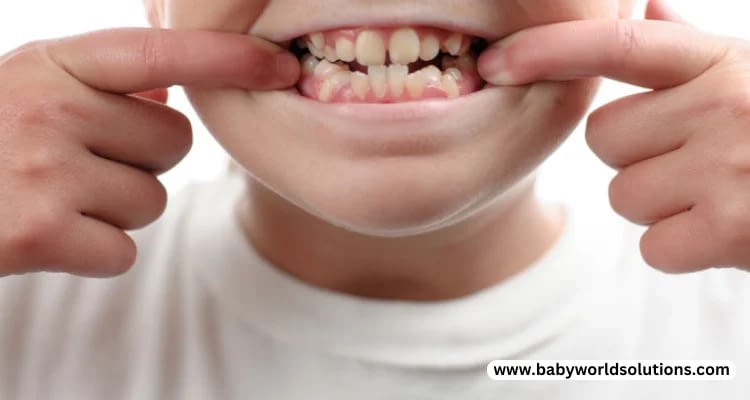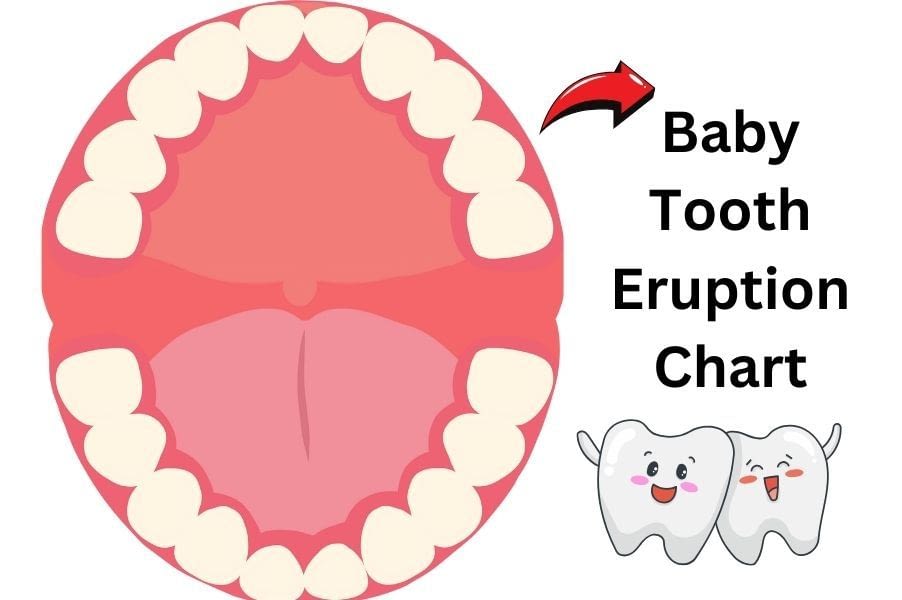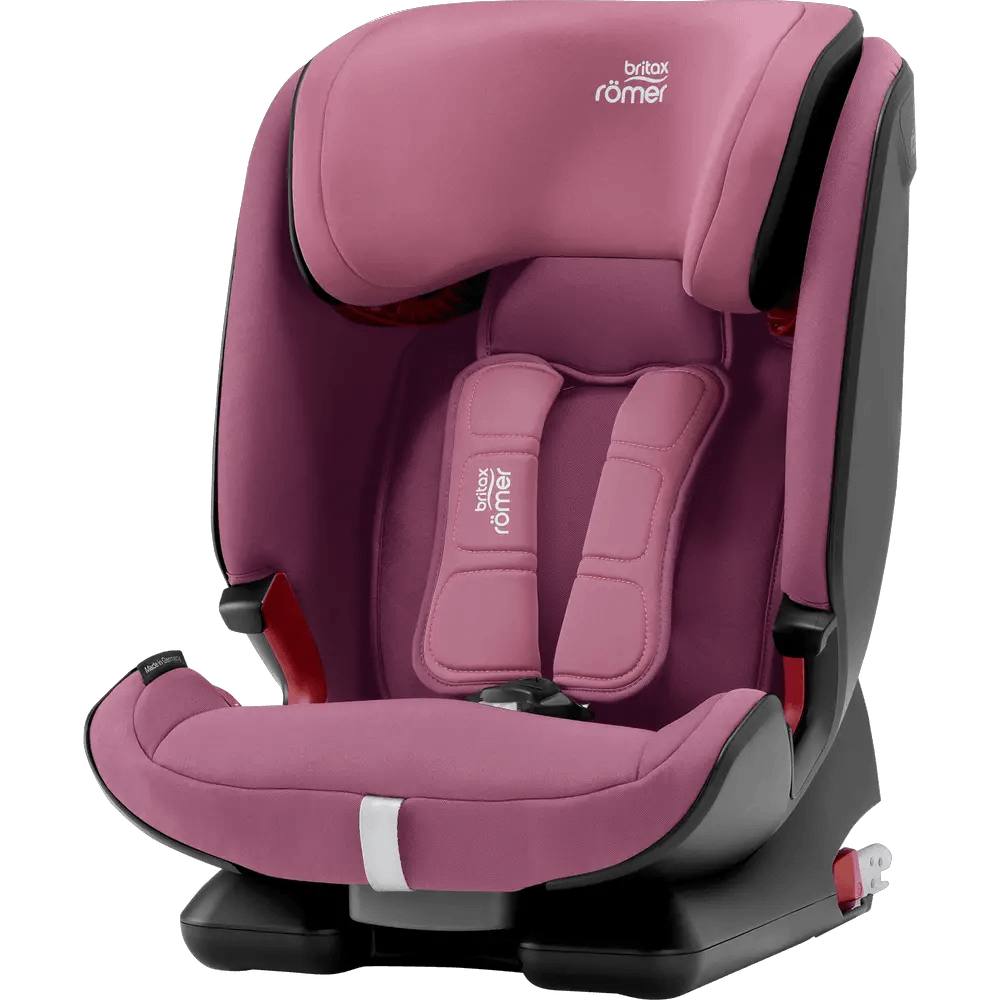The eruption of a baby’s first teeth is a significant milestone in a child’s development, bringing immense joy to parents. Yet sometimes, when those tiny pearly whites appear misaligned or crooked, it can cause concern. It is important to understand that primary teeth are essential for a child’s oral health and development.
In this comprehensive exploration, I’ll untangle the causes behind why baby teeth coming in crooked, present preventative measures, and discuss treatment options.
Understanding Crooked Baby Teeth
What exactly are we referring to when we talk about crooked baby teeth? Many parents envision perfect straight teeth so that any deviation can spark worry. However, it’s important to dispel common misconceptions and recognize that variations in alignment are often part of natural development.
Baby teeth can come at odd angles or spaces, sometimes overlapping and creating a V shape. Occasionally, a baby’s teeth may appear crooked or crowded. This only sometimes translates to a problem that needs fixing, but monitoring these conditions is critical.
Why Are My Baby Teeth Coming In Crooked?
Several factors can impact the development and emergence of baby’s teeth:
- Genetics: Just like eye color and hair texture, the alignment of teeth is also inherited. If parents had teeth that came in crookedly, their children might experience the same.
- Thumb Sucking and Pacifier Use: One of the most common contributors to crooked baby teeth is prolonged sucking on thumbs, fingers, or pacifiers. Such habits put pressure on the teeth and jaws, potentially affecting alignment.
- Mouth Breathing: Habitual mouth breathing can change how a child’s jaw develops, potentially leading to misaligned teeth.
- Tongue Thrusting occurs when the tongue presses too firmly against the teeth when swallowing or at rest. Over time, this can move teeth out of place.
Why Do Bottom Teeth Get Crooked With Age?
As children grow, the reasons for bottom teeth becoming crooked with age are multifaceted. The alignment of teeth and jaw can be affected by inherited traits.
Overcrowding can occur when baby teeth are lost, and permanent teeth erupt without enough space. Habits such as thumb sucking, prolonged pacifier use, and poor oral hygiene can also contribute to misalignment over time.
Furthermore, as we age, the bone density changes, and the teeth can shift due to the natural growth and aging processes, including the loss of elasticity in the gums and facial structures.
Why Are My Permanent Teeth Coming In Crooked?
When permanent teeth emerge, they can often be crooked due to various factors. Genetics is one of the most significant influencers, determining the overall size and shape of the mouth and the arrangement of the teeth.
Additionally, habits from early childhood, such as thumb sucking, prolonged pacifier use, and poor dental hygiene, can affect the path of eruption and final positioning of these teeth.
Other factors include the premature loss of baby teeth, which can cause shifting of the adjacent teeth and limit the space available for the permanent teeth, and various health conditions or injuries that might impact jaw development.
Regardless of the cause, it’s crucial to address crooked permanent teeth promptly with pediatric orthodontic consultations and treatments, which range from braces to more advanced corrective procedures to facilitate proper oral health and functionality.
When Baby Tooth Growing Sideways In Gum?

Occasionally, a baby tooth may emerge sideways in the gum, a condition called ectopic eruption. This irregularity can happen for several reasons, including limited space in the mouth, larger-than-average tooth size, or unusual growth patterns.
Parents need to monitor their child’s dental development and consult a pediatric dentist if they notice a tooth growing at an odd angle. Early intervention may include management strategies such as space maintainers to guide the tooth into the correct position or, in some cases, remove the baby tooth to prevent it from affecting the alignment of other teeth.
While often not a serious issue, promptly addressing a sideways-growing tooth can help ensure a healthier and more aligned smile as permanent teeth emerge.
How To Prevent Crooked Teeth?
Preventing the misalignment of baby teeth involves early intervention and attention to certain behaviors. Parents can take steps to avoid crooked teeth in children.
Promote Proper Pacifier and Bottle Usage
Limit pacifiers and bottles, especially as the child gets older. Ensure you wean your child off these items by the recommended age to avoid long-term oral development issues.
Encouraging Proper Tongue Posture
Teaching children to rest their tongue gently against the roof of their mouth can promote better oral posture and possibly prevent tongue thrusting.
Discourage Thumb and Finger Sucking
While these habits are every day in infants and toddlers, it is crucial to discourage thumb and finger sucking after age three. Encouraging the use of comfort objects like a soft blanket or a favorite toy can be an effective alternative.
Encourage Nose Breathing
Monitor your child for mouth breathing and consult your pediatrician if it becomes habitual. Proper nasal breathing can be promoted by promptly ensuring clear nasal passages, treating allergies or colds, and maintaining good air quality at home.
Pay Attention to the Child’s Diet
Offer a diet that promotes strong jaw development. Foods that require a lot of chewing, such as raw vegetables and tough meats, can strengthen the muscles and support proper alignment.
Regular Dental Check-ups
Schedule regular dental check-ups as early as the eruption of the first tooth. A pediatric dentist can monitor oral development and detect early signs of misalignment, providing timely advice and interventions.
By following these preventative measures, you stand a better chance of ensuring your child’s baby teeth grow as straight as possible, setting the foundation for a healthy and aligned permanent set of teeth.
Treatments: Do Crooked Baby Teeth Straighten Out?
It is not uncommon for parents to worry when they notice crooked teeth in their baby’s mouth. However, it’s reassuring to know that in many cases, baby teeth that come in crooked can self-correct as the child grows.
As the jaw expands and baby teeth fall out to make way for permanent teeth, there is often enough space for teeth to align correctly. Also, because baby teeth serve as placeholders for permanent teeth, they do not necessarily indicate how they will align.
If crooked baby teeth are noticed, treatment options can include:
- Early Orthodontic Intervention: An orthodontist can evaluate your child’s teeth and jaw development and suggest if early intervention is necessary.
- Dental Appliances and Braces: In some cases, appliances like spacers or braces can correct alignment issues in a child’s early years.
- Retention and Follow-Up Care: After any corrective treatment, maintenance is essential to ensure the lasting success of the procedure.
Routine dental visits are essential in spotting and addressing crooked baby teeth early on. A dentist specializing in pediatric care can monitor your baby’s teeth as they come in and identify any alignment issues that may need intervention. These check-ups reinforce good oral hygiene habits that will benefit your child’s smile for years.
Conclusion: Do Baby Teeth Come In Crooked
While crooked baby teeth might seem alarming initially, they often resolve as your child grows and their permanent teeth come in. It is important to give early attention to potential orthodontic issues. This can significantly impact the treatment outcome and avoid needing more extensive intervention in the future.
Investing in preventative care and seeking treatment when necessary can contribute significantly to your child’s healthy oral development.
It’s important to remember that every child’s smile is unique. So, if you notice your baby’s teeth coming in crooked, don’t panic. Instead, use it to consult with dental professionals who can provide tailored advice and care for your little one’s dental journey. Above all, please encourage your child to smile confidently, knowing you’ve taken wise steps to care for their oral health from the beginning.
1 Visit today





